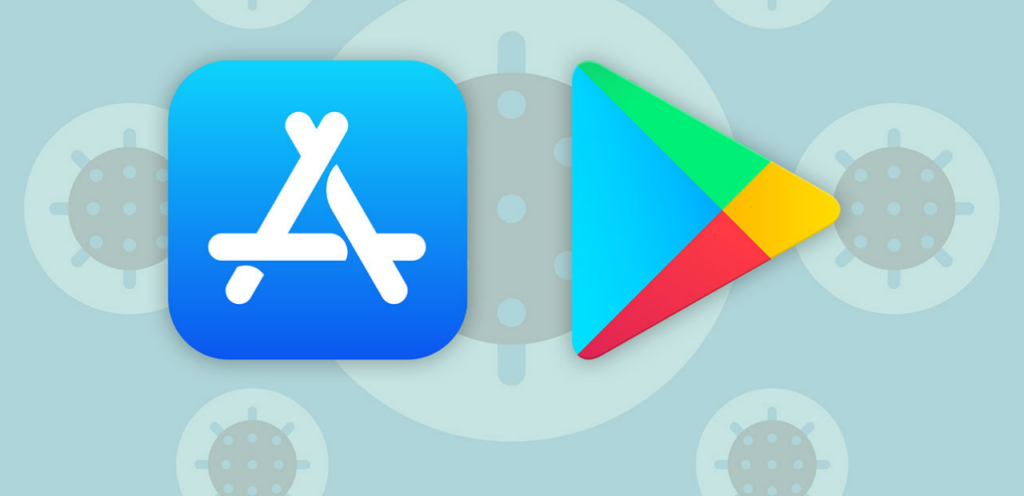Table of Contents
After finishing the development of your application, it is time to present it to the audience. The most popular marketplaces are the App Store and Google Play store. As these platforms have a high level of trusted reputation among app users, they provide a wide range of rules and standards for those who want to launch their applications.
We covered the main steps of releasing and publishing your applications, making the production successful, and what reasons your app can be rejected.
How to submit your app on the App Store?
No matter if it is your first launching of a new app or you need to update your existing app and add new features, the process of submitting an application by the App Store is easy and complex simultaneously. What is very important to remember is to follow all the requirements, rules, and standards of the Apple Store as all apps are reviewed very carefully and the App store reveals any error or violations. We prepared a list of main steps that should be taken to submit your app to the App Store.
Code Signing
The first step in the App Store submission is to create a provisioning profile and certificate that can be used for specific devices. If you want your app to be submitted for sure, you need to distribute this provisioning profile and certificate singly. It is not so difficult to do. You can use Xcode for this process. What is it used for? Xcode builds and manages certificates, singing identification, and registration. However, if you already have automated signing, you can start from the second point.
Create an App Store Connect record for your app
The next step is to create the App Store Connect account. To perform it, you need to create your own App Store Connect organization and be a team agent. Then you sign in with the Apple ID that you already used to check in the Apple Developer Program. Also, there is one more way to connect. You can be invited to the organization by the admin or other manager.
Archive and upload your app using Xcode
Until you decide to send your application for review and future submission using App Store Connect, you have to upload your solution through Xcode as we mentioned before.
Configure your app’s further details in its App Store Connect record
To submit your app successfully, you need to fill in all important and additional information about your application. It can be other languages, menu, and categories, privacy policy, etc. This step you can do using the category “App information” in the App Store Connect.
Submit your app for review
For the final step and send your app to submitting, scroll to the “Build” section in your app’s App Store Connect record.
How to submit your app to Google Play?
Submitting an app to Google Play can seem to be easier than the procedure offered by the App Store. However, it is a wrong statement. Google demands a wide range of standards that should be included in your solution. Every tiny detail, picture, the word is critical for submission. Here is a short general guide on how to submit your application to Google Play successfully.
Complete information about the app
To start the process of submitting your app on Google Play, you need to use the Play publisher account in the Google Play Console. There you will see the button “Create Application” where the process of adding a solution begins. First of all, you need to type in the title and main language of your app. Then, you will need to fill all the needed and complete, relevant, and true information about your development. The requirements are the following:
You have to be sure for 100% that the information about your application is accurate, complete, and relevant – description, contact info, screenshots, and video. The content has to meet the demands of Google Play and strictly follow them. At this stage, you can save your app info in the draft.
Upload the APK or app bundle files for your app
As you have finished the first steps, you are going directly to the stages of release. There you need to start uploading files of your application. Google Play proposes several stages of app release, where each of them demands particular requirements and data. You can find a separate app releases section where you can choose the type of release. The final one is the production of the last variant of your app on Google Play.
It is excellent that Beta and Alpha types of releases give the ability to test the application carefully and get a review about needed improvements before the production. To finish all stages of releases, you need to go step-by-step.
- Choose whether you want to use the Google Play app signing on your app or click on OPT-OUT to ignore and sign in locally.
- Click on Browse Files.
- Choose your app’s APK or App Bundle files to upload.
- Click on the Review at the bottom right of the page. This confirms and submits your app’s release information.
Also, before the distribution of your application you need to type a pricing plan and content rating.
Publish your app
After all releases and checking, you are ready to publish your application. Production is the final release so everything should be done properly. Now all you have to do is wait for Google review and feedback about your development. It takes more or less 2 hours. After the review, your app will be published on Google Play in case of meeting all demands.
This statistic presents the growth of available mobile apps in the Google Play app store worldwide
Step-by-step guide to submitting an app
Our experienced mobile app developer Andrii Zhuravlov-Galchenko prepared a step-by-step guide on how to submit and publish your application on the App Store and Play Market successfully. This process is not long or very complicated, you just need to follow every step thoroughly.
Submitting an app to Appstore (iOS) | Submitting an app to Play Market (Android) |
| Paid Developer account ($99/year). Also, you have an option to pay for an enterprise account ($299/year) it has a bit more option managing access permissions to your account and several other methods of distribution. But now you can fully develop an application and install it on developers’ devices using a free account. | Developer account one-time purchase for $25. Still, without a developer account, you can freely build and sign apps and install it on any android device. |
| Your application must strictly follow App Store Review Guidelines this document covers each aspect of your application like safety, performance, stability, usefulness, some law restriction, etc. | Your app must follow Play Market Rules. There you can find all information you need about your application, what it can do, what it can’t do, exceptions, and so on. |
| After the app is ready you need to upload the signed build to the App Store Connect with all descriptions, images, icons, and other info. You should keep in mind – if your app requires authentication – you need to prepare credentials that can be used to sign in your app. | To release the application to the Play Market you need a signed build, a bunch of texts and graphic resources (exactly what you need you can find in the developer’s console) |
| The App Store review team takes closer looks for the basic functionality like registration and sign-in, core functionality (eg news feed on the main screen). In-app purchases (not one-time and subscriptions) | Play Market sometimes includes additional requirements for apps like now in 2020 – not to build apps that are like “COVID tracker” etc. |
In general Play Market is much more forgiving in terms of app functionality and so on.
How long does it take to publish an application?
Both the App Store and Google Play review every new application very thoroughly. It takes much time to check the content of every development if it is appropriate, conformity of descriptions, screenshots, and videos to real applications, reveal errors and bugs, or any type of violations of policies, availability of contact info and privacy policy, high level of safety for users and so on. As for Google Play, it takes from1 to 4 days but sometimes it can be longer. If we talk about the App Store, it can take several days as well as weeks. There are some cases when your app can be delayed or rejected. It means that you broke some rules, and you can update it or launch it next time.
Reasons for rejection on App Store
Not all applications get the submission by the App Store. This happens because of breaking some rules and standards established by Apple. However, there is a list of the most common reasons why your app can be rejected. We have covered them in our previous article, so we would like to remind you.
Bugs
If the App Store reveals your application’s unstable work with any error or bug, the solution’s submission will be delayed or rejected So you need to test your app very carefully before sending it to the Apple Store.
Lack of information
The description of your application should be updated and full. If your app has a login option, you must add a demo account for the review team to look at the app performance.
Broken Links
Every link and button of your application should work perfectly well. It should contain support, privacy policy, and contact information options.
Inaccurate Descriptions
The description of your app must be accurate. All functions and screenshots should be relevant and demonstrate real options for the solution you are submitting. Also, you need to use suitable keywords and avoid unnecessary phrases.
Performance
Performance is a fast work of the application that doesn’t overload the devices and doesn’t influence devices’ battery or work. The performance of the app should be stable and updated. In other cases, your app will be rejected.
Reasons for rejection on Google play
Each year a huge number of applications try to violate Google Play policies. That’s why Google always checks all apps and their content properly and deletes them in case of violations. Google made a lot of efforts to improve the system of detecting strange content and apps. If you are going to place your solution in the Google Play, you should find out about the contents that are strictly forbidden in this marketplace:
- sexually explicit content
- things that potentially endanger children
- graphic depictions or descriptions of violence or violent threats to any person or animal. Instructions on how to engage in violent activities like bomb- or weapon-making.
- apps that promote self-harm, suicide, eating disorders, choking games, or other acts that may result in injury or death.
- bullying and harassment
- hate speech
- reference to sensitive events like disaster, atrocity, conflict, and death gambling
- illegal activities
- inappropriate user-generated content
Conclusion
Publishing your application on Google Play or App Store is a scrupulous and sometimes complicated process. The main difficulty leads to covering all demands for application to be placed on these marketplaces. Of course, you can do it yourself. However, if you want your solution to be successful, it is better to hire experienced specialists to launch. Altamira has deep experience not only in developing applications but in delivery and successful publishing on marketplaces. We already have several solutions that got the highest rates on the App Store and Google Play. We pay attention to every tiny detail during your application release and know how it can be submitted for the first time.






